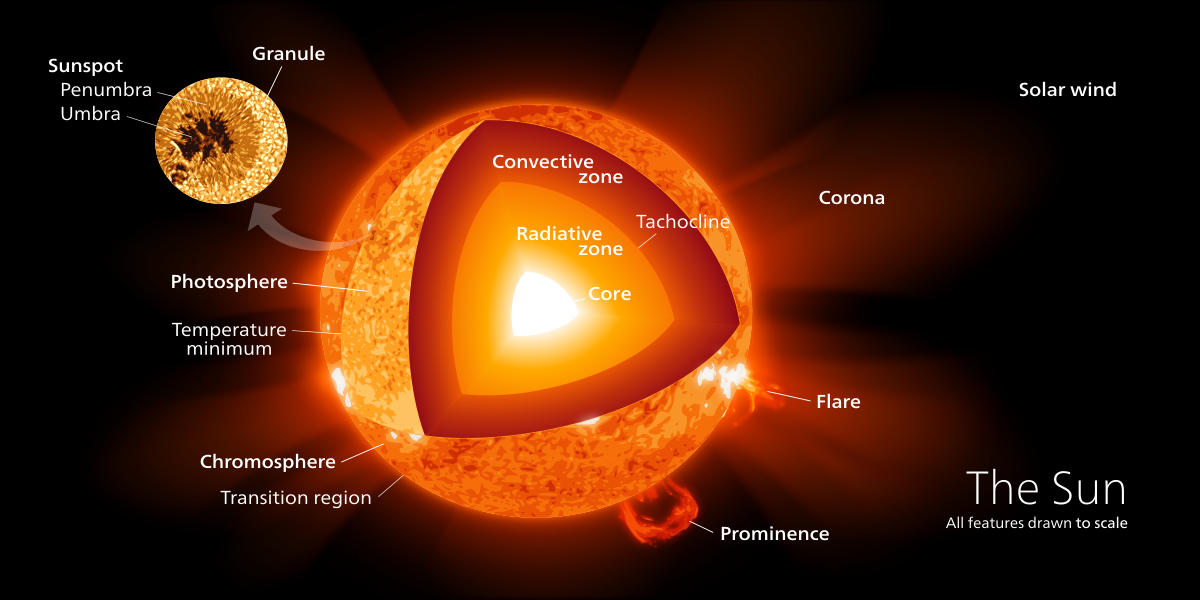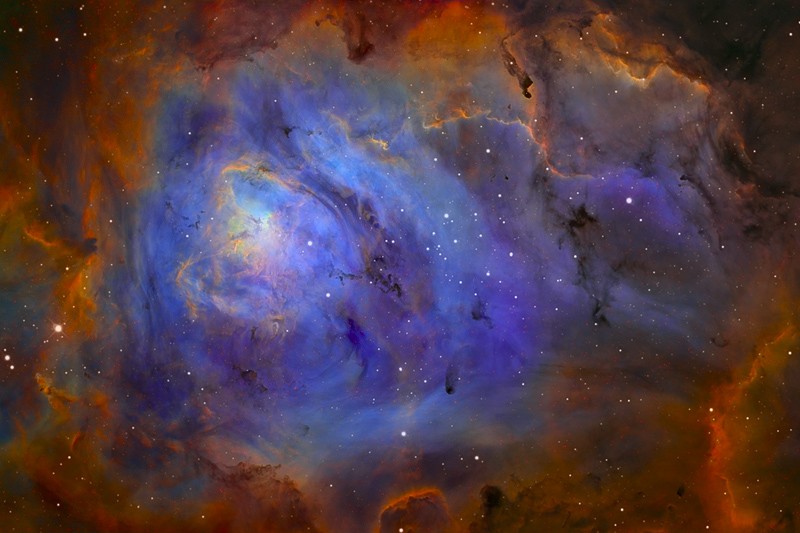Something Is Happening in the Sun!
Structure of the Sun
Wikimedia Commons/Kelvinsong
Something important is most definitely going on inside the sun! We have just finished eleven straight days with no sunspots on the sun’s surface. Early last month there had been four consecutive days with zero sunspots. Now, having no sunspots around the solar minimum of the eleven year sunspot cycle is not at all unusual, but we are still at least four years away from the next expected solar minimum around 2020-2021. To see any period of zero sunspots now is highly unusual.
During the last solar minimum in 2009, there were 260 days or 71% of the year during which there were no sunspots, which was somewhat long even for a solar minimum! (See the plot below.) During the following year of 2010 there were 51 days (14%) with no sunspots. In 2011 there were two days (<1%), followed by zero days in both 2012 and 2013, one day in 2014, and zero days in 2015. This year there have been 15 days or 8% to date.

The large number of days with no sunspots during this solar cycle has triggered wide-spread speculation we may be on the verge of another Maunder minimum. The original Maunder minimum was a period of 70 years of exceedingly rare sunspots from 1645 to 1715, coinciding with some of the chilliest years of the Little Ice Age.
Sunspots are surface manifestations of heat-releasing magnetic storms that occur during periods of greater solar activity and power output. The number of sun spots is then highly correlated with power output from the sun and the intensity of the solar wind. Whenever the solar wind intensity is high, it blows high energy charged particles constituting cosmic rays (mostly high-energy protons)

Wikimedia Commons/NCdave
from outside the solar system away from the solar system interior, decreasing cosmic ray particle flux into the lower atmosphere. These cosmic rays in turn ionize atmospheric particulates in the lower atmosphere to act as nucleation centers attracting liquid water droplets to form clouds, which act as a sunshade to cool the Earth. With large numbers of sunspots and high solar wind intensity, fewer of these cosmic rays act to create this natural sun-shade, creating global warming.
With declining numbers of sunspots and decreasing solar wind intensity, the mechanism works in reverse. Increasing high energy cosmic ray flux into the lower atmosphere increases cloud cover and causes global cooling, or at least a pause from the global warming part of the roughly 1000-1500 year cycle that started with the end of the little ice age in 1860. This appears to be the situation we are in right now.
PS: You can keep track of solar activity daily on my Solar Activity page!
Views: 1,965































